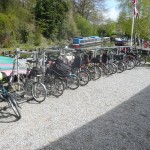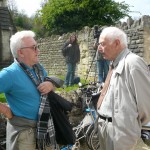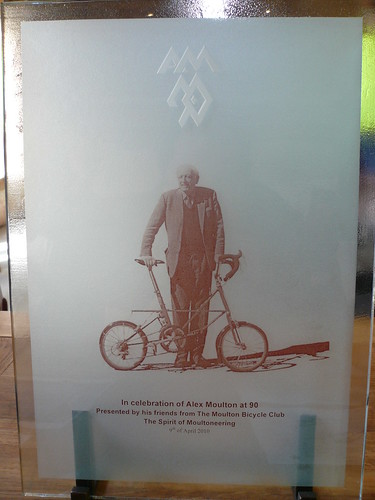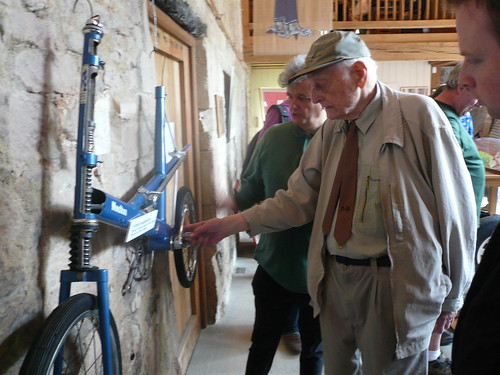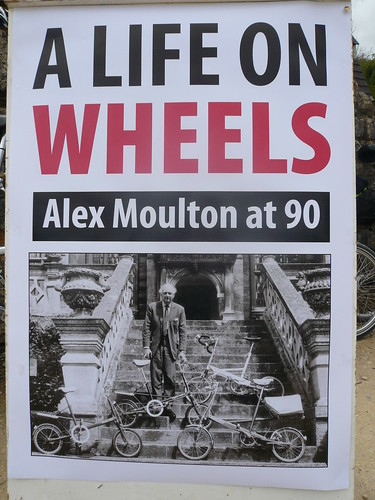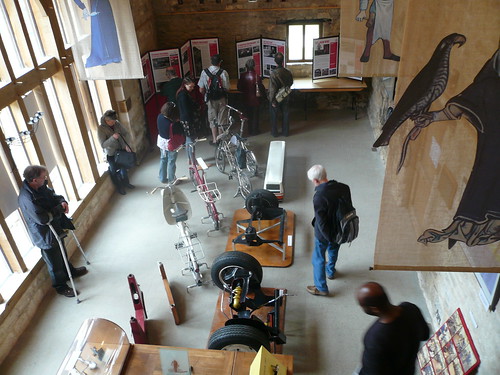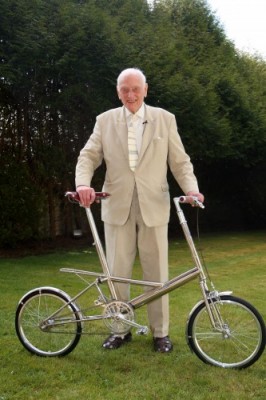 Photo: John Pierce / PhotoSport International uk usa asia
Photo: John Pierce / PhotoSport International uk usa asia
Last Friday marked the 90th Birthday of one of Britain's most remarkable engineers and although the work of Dr Alex Moulton has been involved for most of those years behind the scenes with suspension in general and cars in particular - most famously on the original and iconic 1959 Mini - it is on bicycles and in cycling that the name of Moulton is most closely associated.
Long before bikes routinely displayed front and rear suspension, Moulton was widely mocked by adherents to the conventional bicycle shape but nonetheless launched his high-pressure-small-wheeled-bikes-with-suspension and proceeded to race them successfully in the early 1960s to prove his point. Time-Trialling legends John Woodburn and David Duffield yes, that David Duffield on the telly won records aplenty on their Moultons to demonstrate that lower rotating mass and smaller aerodynamic profile held benefits for the racing cyclist and some production versions furthermore neatly "demounted" to fit into a Mini boot.
Even in those days the Union Cyclisme International UCI was doing its best to maintain the status quo which put paid to the racing exploits under UCI rules - didn't stop them winning the US coast-to-coast record, though - but by then the bikes were selling in good enough numbers to sell the concept to Raleigh in Nottingham who took over production and immediately cheapened some of the very things that made the design such a success - not least the high-quality, high-pressure tyres which didn't handle half as well when replaced with nasty balloon tyres. In any case, general bike sales in the 70s were in decline and it didn't take long before Raleigh's version of the bike was stopped altogether.
In the early 1980s Dr Moulton reinstated production at his own artisan facility at Bradford on Avon in Wiltshire where he lives and this time concentrating on top-notch quality soon had enthusiasts drooling at his ever-more outrageous cycling sculptures. Buying a Moulton really is now analogous to buying a piece of art and cyclists travel from all over the world to collect their new Moulton bikes. The Japanese have a particular fascination with the exquisite little machined details.
The garden party to mark the 90th birthday was notable for two bicycles. The first - Project Sixty and shown here with Dr Moulton - is a reworking in silver-soldered, Reynolds 953 stainless steel of the original "F" frame from 1962 with added details including tweaked suspension from the latest "Speed" model. Ostensibly, the Project Sixty is a one-off birthday present and no one's confirming it but we can't see why this couldn't be a production bike and if it is, we want the first one.
The other and more mysterious bike is far from production and designated "M Dev90". It has the new-style Moulton space-frame but with its elements made from carbon-fibre rods clamped to a central hub. According to Moulton Developments, "The front suspension system is called the 'slim-line' and is a patented version of Moulton's torsional-shear rubber suspension system. It maintains his long experience in damped anti-dive suspension with rider access for control of suspension movement.
"The particularly radical aspect of the M Dev is that its designer intends for it to be supplied to dealers in kit form - to be assembled by the shop in the customer's presence. M Dev owners will also be able to choose from a range of coloured anodized head and seat tubes. To find out more about what's under that dust sheet try here.
Dr Moulton is looking for a partner to produce the commercialized M Dev90 but presumably based on past experience isn't in a rush to get into bed with the wrong one. But it's fair to say that 50 years down the line from the declining market of the 1960s, there's a very different attitude now to bicycles and where cycling is going not to mention new materials and the kind of things we can successfuly make in the UK.
Many happy returns, Sir.
via Dr Alex Moulton gets a 90th birthday present | road.cc | The website for pedal powered people: Road cycling, commuting, leisure cycling and racing.





